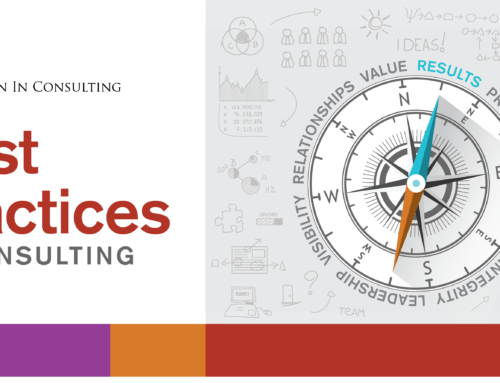We’re human. All of us. (You, too).
And sometimes we find we can’t do it all, after all. — So how do you ask for help? Maybe the thing we should focus on is why we hesitate to ask for help.
It’s easy to think these things as a consultant:
–You have to have all the answers.
–You’re supposed to be done learning.
–You’re being watched and being judged.
And on that last count? — You probably are, if we’re honest.
But don’t worry. The people you work with (including your clients) would rather you close gaps that may now be holding you back.
Maybe you need to learn to delegate well (that is a challenge for many entrepreneurial types), or need to stretch and grow your leadership skills and good teamwork practices.
Why do people have a hard time asking for help?
Here are just a few possibilities:
– They’re angry that they need it.
– They’re embarrassed that they need it.
– They don’t see or admit it.
– They don’t see, or admit how they’re hurting others with their insistence that they don’t need to grow or change.
There are other reasons, too.
How do you ask for help, or to change, and then receive that well?
It’s really a matter of learning to let go, being clear about the goal – which should be directly tied to what’s important to your customers – and being flexible in how you meet it.
And humility helps, too.
Here are a few other guidelines if it’s hard for you to delegate, which is just one of the skills that many people need to learn and practice:
- Define the customer-focused goal or target.
- Make it clear what the boundaries are for this work, and how it fits into the whole.
- Envision the situation working. If you can’t imagine that it will, the odds are, it won’t, or you may find ways to mess it up, “proving” that it doesn’t work (strangely, but, yes, seriously).
- Figure out the communication flow and follow-up mechanisms, including how and when you’ll check in, and what measures or other indicators you’ll use as the basis of communication about progress and status as the work proceeds.
- Know what information and contact you need while the work is underway to feel comfortable, or as comfortable as you’re going to be, letting go.
- Be clear about who’s going to do what. It’s easy for two people to be waiting for the other to finish the same thing…each thinking it’s the other’s job. In that case, deadlines are missed, among other things. Or it’s possible for two people to be doing the same work, each thinking it’s their job, so the work is duplicated. Spell it out, then play it out.
- Be clear about work and quality standards, and what they’re based on. These standards should in some way be directly tied to what’s important to your customers.
- Be honest about the things you’re concerned about, as the work begins, and as it proceeds. And those things you least want to talk about? Talk about them. These discussions could be essential to success, if you do, or directly lead to failure, if you don’t.
When your fears see the light of day, you may realize they’re nothing to worry about. And if they are worry-worthy, well, the sooner you get to work checking them out, and changing, the better. Keep in mind your overall goal, and the customers for it, as you consider what help may lead you to succeed even more. Sometimes your own short-term comfort is what you most have to let go as you reach for change, and then stretch and grow.
Remember that when all is said and done, change just feels different temporarily.







